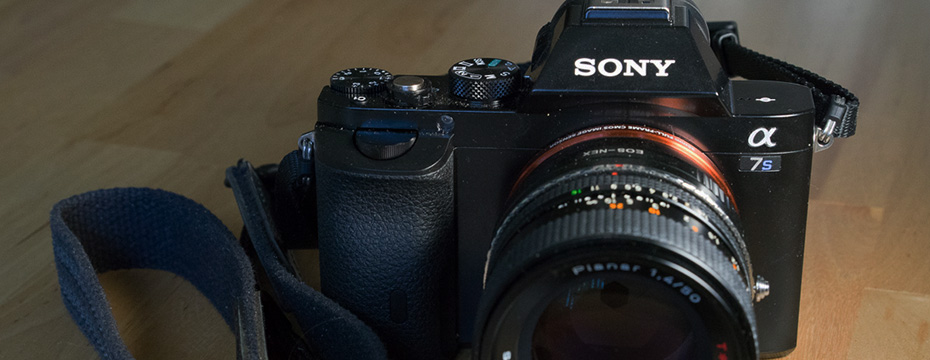
Life With A Sony A7S: At 30 Days
Contax Zeiss Distagon 28mm F2 Sony A7S Test from TheCameraForum on Vimeo.
I find it hard to believe, but it has already been over a month ago that I received the Sony A7S. As I anticipated, hoped, and expected, it has been a very interesting camera to work with. The better I get to know the A7S, the more it keeps giving new and mostly pleasant surprises. The A7S is a camera you can just take for granted if you want, it is that flexible. It works so fine in “P” mode for those happy snaps where I neither need nor want anything more that I was at first lulled to sleep just enjoying the snappy feel and totally silent shutter, content to let the camera do the primary technical thinking for me. There is a lot to like with this camera, right from the very basics on up. This one Sony got right.
“Life is what happens when you go off script” – Variety Magazine, July 8, 2014. Sony’s engineers read that issue before building the A7S.
If you’re also shooting another body in the same family as I am, the A7S and the A7R are quite different in both sensor and overall operation. Sony claims the S in the A7S name stands for “Sensitivity” where the R in the A7R is for “Resolution.” Of that, I am witness in both cases, as I have used and reported on the Sony A7R often over this past year.
Going foreword, I am still discovering the ways having an A7S available will impact my workflow. I’m still in discovery and experiment mode. I likely will be for quite some time yet, but I have already shot one large client video job using the A7S. My client and I are pleased as punch with that decision looking at the fantastic results. As usual, this was a commercial client shoot that is embargoed until my client releases the footage publicly. I can not disclose details or footage yet, but should be able to here shortly.
I readily admit to using the A7S as much as possible this past month for nearly everything so I would get to know it and its inevitable pluses and minuses I find with every camera body. I’ve never found such a thing as the perfect camera body for every photographic job. The philosopher who coined “Life is full of compromises” must have been a photographer. In camera designs, everything is always a compromise of one type or another. In a world as wide and as popular as photography has become, there is a market demand for just about anything photographic along with a camera body to fill it. It is a crowded market.
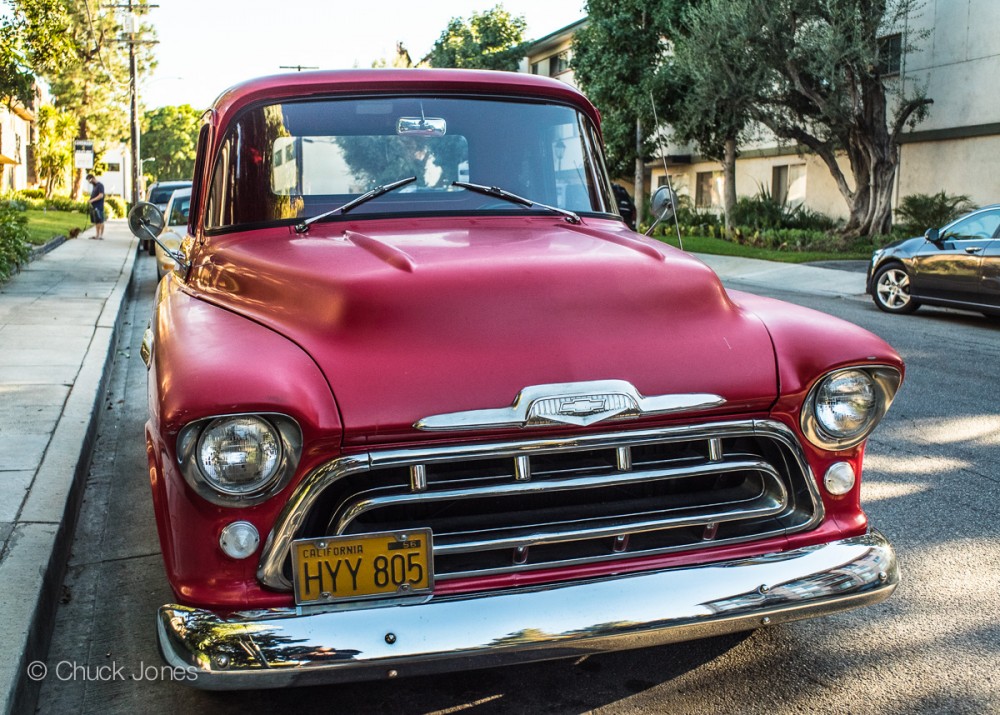
The key to photographing chrome and glass is having a wide dynamic range, something the A7S excels at.
One of the things Sony has done well is design their Alpha series product offerings, not on price point levels as most manufacturers do, but rather around technological market segments. As an example: Canon offers the 1D-X as the flagship, fast action/sports high end of the line at $5,999 new. Want 4k video? Add $4,000, and change the name badge to 1DC. Same camera, same body, same components save for a video sensor. Drop down the frame rate, AF system. Cut a couple other “Pro” features and call it a $3.500 5D Mark III. All same basic functions, each in a different price segment. “Prosumer,” whatever that designation means anymore – Canon begins with the sensor size change to an APS-C sensor as in the recently released 7D Mark II.
In contrast, the Product Managers at Sony appear to have chosen the market segments for the A7 family based around intended end uses, a bold and innovative approach, proven a good one for Sony so far. An ultra high resolution A7R is for those producing large format prints, professional advertising layouts, architectural photography, landscapes, and all the other myriad of things people do or want to do with an ultra high resolution digital camera and the resulting files. Outfitted with proper glass, my A7R will rival the output of my former Leaf digital back – an outfit at twenty times the purchase price that also, incidentally, required excellent glass. The A6000 and A7 look to me intended for general photography where critical autofocus performance is important. The A6000 features low price, “small kids” and fast furry animal capable autofocus tracking, and an APS-C size sensor and NEX lenses. The A7 is for those who prefer the look from a full frame sensor and faster lens, like the excellent Sony 55mm f/1.8 FE, and don’t need or want the huge files from the A7R.

Lens options for the A7S like my old Canon 55mm f/1.2 FL shown here are almost unlimited with a simple inexpensive adapter.
Discovering what the A7S is and is not for in my own work has been the first thirty day challenge, and surprisingly more of a challenge than I had anticipated. I do quite a mix of different types of photography. I am heavy on music and documentary event work, but I also do everything from food to macro and jewelry to fine art instillations when requested by a client. Since we never know what a client is going to ask us for next, access to a mix of different makes and models of cameras of different formats, each particularly strong for one use or aspect that makes them particularly well suited for a particular set of tasks is important to all commercial photographers. Doing hybrid storytelling, combining video and stills with audio, things can get even more complex and confusing. To my surprise, the A7S has simplified that work by providing much more performance than I had expected, even with the marketing buildup around it.
I can’t own every camera, even if I wanted to. I pick and choose what I own and what I rent based upon my business needs and how it fits my personal style and my particular quirks. I am an old dog and so have lots of old habits, preferences, and “quirks” that refuse to die-like my love of old manual focus lenses. Autofocus is great at times, but I don’t like the 70-80% hit rate or the constant hunting of autofocus in low light. I also like the greater degree of precision setting my point of focus manually, not on the fly automatically. I commonly use the narrow depth of filed provided by the full frame 35mm chip to the fullest advantage with a fast lens. The resulting depth of field at times is so thin, I fail to land my intent more than I achieve it using autofocus with most cameras I have tried. Autofocus relies upon contrast differences with the A7S, same as the A7R. What is different with the A7S though is it has an uncanny ability to land focus in practically no light at all.
Sony marketing positions the A7S as a low light, high ISO still photography solution delivering video performance with quite amazing results in light other cameras would find impossible. For once, I can agree with everything Sony claims. The A7S is one remarkable camera.
“The extra-large pixels on the α7S collects dramatically more light than traditional cameras to produce beautifully detailed, low-noise images in even the most challenging lighting environments.” – Sony Press Release
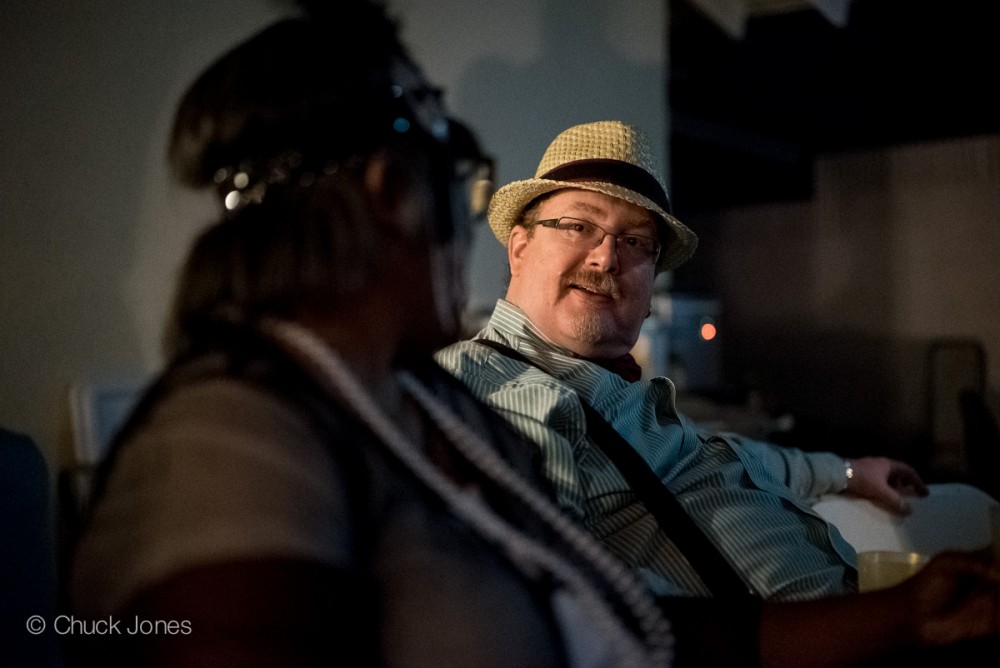
The ability to shoot useable ISO 40,000 images like this one opens up whole new photographic worlds.
Hard as it is to believe without seeing it for yourself, the words dramatically more light are possibly an understatement. The A7S will photograph in light that these old eyes of mine are unable to see details, save for the rear live view screen or in the viewfinder on the camera itself. A good camera always becomes like an extension of my hand, but this A7S goes even further. It adds a set of bionic eyes to guide that hand. I’ve never experienced a camera that can capture a photograph at ISO 40,000 that in quality was anything more than a novelty. Few cameras even have speeds that high on their ISO dials. Never before could I have considered ISO 40,000 captures usable for publication. The A7S is quite capable of this feat and more, and the A7S will do it repeatedly. Thanks to the A7S alone, this article has three. All with consistency, quality, and dynamic range in both tone and color.
Worthy of note is Sony’s claim the A7S is the world’s first 35mm full frame sensor based camera to incorporate “direct pixel readout” utilizing the entire width of the full-frame image sensor without line skipping or pixel binning. Therefore in both HD and 4K video acquisition it can read and process data from every one of the sensor’s individual pixels. Why do I care about this? Because it eliminates moire and aliasing, that age old problem introduced to video where the diagonal lines seem stair stepped and wavy during playback.
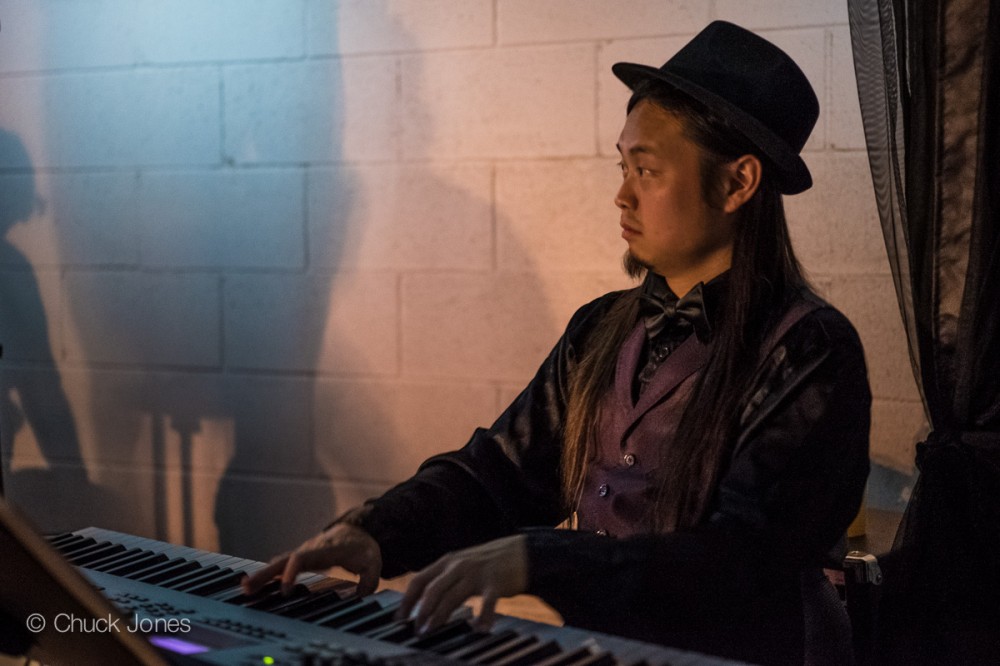
ISO 12,800 is not only a workable reality with the A7S, it will become a new norm for many live event shooters to gain back much needed shutter speed.
In XAVC S video mode, the a7S can output uncompressed QFHD 4K video (3840 x 2160) in 8-bit 4:2:2 to an optional external 3rd party 4k recorder via the HDMI port. However, as of this date the first week of October, none of the promised 4k video recorders are shipping yet. The Atomos Shogun, often showed attached to a Sony A7S, is now promised for shipment to dealers late this month. Only time will prove or disprove the accuracy of that forecast, however what is certain is there is much more to the A7S 4k story yet to come.
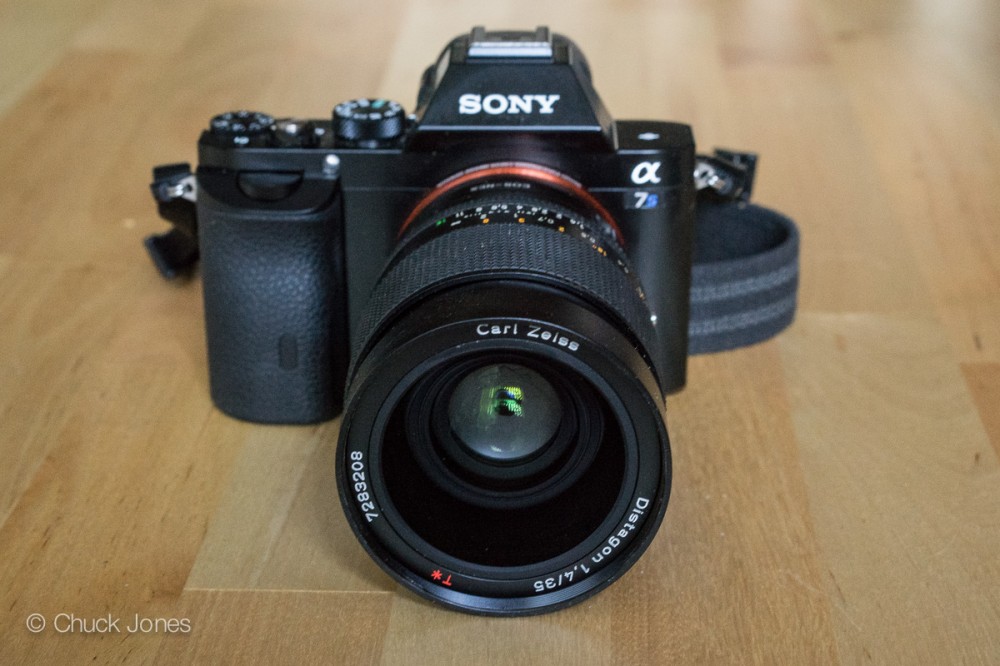
Carl Zeiss Distagon 1.4/35mm Film Lens Made By Contax In Japan. These old Zeiss are wonderful for video too.
Using XAVC S video mode also opens up another pretty fantastic option on the A7S. Namely, the availability in that shooting mode of the superb Sony S-Log2 exposure profiles. For those not already familiar with S-Log2, this is a video dynamic range compression tool Sony originally introduced as a $3,000 extra cost option on their top of the line F3 camera. Including S-Log2 and AVC S video support in the A7S was a masterful stroke of genius, opening up endless additional possibilities for filmmakers never before possible with DLSR type cameras. Like all truly revolutionary features, it will take some time for the fullest effects of this incredible change to incorporate themselves fully into most filmmakers workflows. As a Director and DP myself, I am finding the features amazing, but it is taking me some time to get my head fully around how to best incorporate this ability to tell better stories. One caveat – the XAVC-S and S-Log2 selection does engage ISO 3200 as its minimum setting. This means for bright lighting conditions (think full sun here) a serious ND filter will need to be applied to the lens if you want the shoot maximum depth of field. Sony has made no provision for built-in ND filters in the camera itself.
Contax Zeiss 35mm f1.4 A7S Test from TheCameraForum on Vimeo.
Audio on the A7S has also gotten some welcome attention. The A7S records ACC Linear PCM, and has a Multi-terminal interface shoe that is compatible with Sony’s XLR-K1M Adaptor Microphone Kit (plus a new model under development I know about that is not released yet). Visual stereo audio level indicators are displayed on the back of the camera, and there is an 1/8 inch headphone jack for monitoring the audio real time as it is being recorded. Adjustments to adjustments to levels can be made at any time. The quality of the internal pre-amplifiers and analog to digital converters is excellent, with low noise and all the gain you would ever need. The optional LKR-K1M even provides for XLR connectors and phantom power.
Native FE Mount lenses are still relatively few, but more are arriving all the time. I have the 55mm f/1.8 FE as my only native autofocus lens and it is excellent. I also routinely use my older Contax Zeiss and my Leica M lenses on the A7R and S, and find them superb for the most part. Shooting as much video as I have this past month, I can say I am very much enjoying the look from these older lenses, their drawing signatures, and their color reproduction with the A7S camera.
My A7S Conclusions So Far, At 30 Days
All of these early conclusions are subject to change later on of course, if I find some fly in the ointment I am not presently aware of.
For hybrid storytellers such as myself, who need and use the fullest capabilities of the A7S in both still photography and video, there is nothing to equal it. Yes, it is only 1080P internal, and yes you do need an external field recorder to get the promised 4k. But the 1080P you get is so darn good with this camera I don’t miss not having 4k yet. I feel like a young kid riding a bicycle with training wheels, fascinated with the performance of the “big dog” features available only on the A7S. The ability to seamlessly move from ultra high quality video to ultra high quality still photographs all recorded in wide dynamic range with beautiful color means the A7S provides an incredible value for the price, a virtual powerhouse contained in a nice compact package. Truly, a unique camera for this use.
For just a videographer, the A7S provides a formerly $3,000 upgrade value found only in much more expensive Sony professional cameras. XAVC-S and S-Log2 support opens up not just amazing shadow details and incredible dynamic range, but also the entire world of LUT – S-Log grading without image degradation. Addition of the 4:2:2 uncompressed 8 bit 4k HDMI output becomes icing on an already very tasty cake. So once again, the A7S provides an incredible value for the price, a virtual powerhouse contained in a nice compact package.
For just a still photographer, the A7S value is in the ability of the A7S in low light. No question about that. But there is high ISO low light performance available at a lower cost, as I pointed out in an earlier article. Other good cameras exist that do very well in dark places. But what none of these other cameras brings to the table is the incredible dynamic range or those large pixels the A7S employs to collect blue channel information. This is the first camera I know of that has a blue channel that acts as strong as the red or green, and just as noise free. What this means is whiter whites, deeper more saturated colors, and the best black and white output this side of a dedicated monochrome only body. Add on the uncanny ability of the A7S to shoot a usable photograph at ISO 40,000, and once again I see the A7S provides an incredible value to me for the price, a virtual powerhouse contained in a nice compact package.
Image ©2014 Virgile Simon Bertrand.
The ISO 40,000 portrait is of me out to dinner eating A7S crow with photographer friends. I called the A7S priced wrong in the beginning, uninformed and unaware as I was at the time of the full facts behind the whole features sheet. After my first thirty days using this camera, I can now see large values I did not see before. I am happy to have been shown the error of my ways by experiencing the A7S for myself. Now I know the A7S is a tremendous value for the money. Thank you Sony for making some bold and daring moves with the A7S, I think there is a place for this camera at most photographer/videographer tables.
Stay tuned for more updates as I get down the road and use this camera with a Shogun 4K field recorder.
PLEASE RATE THIS STORY! [ratings]



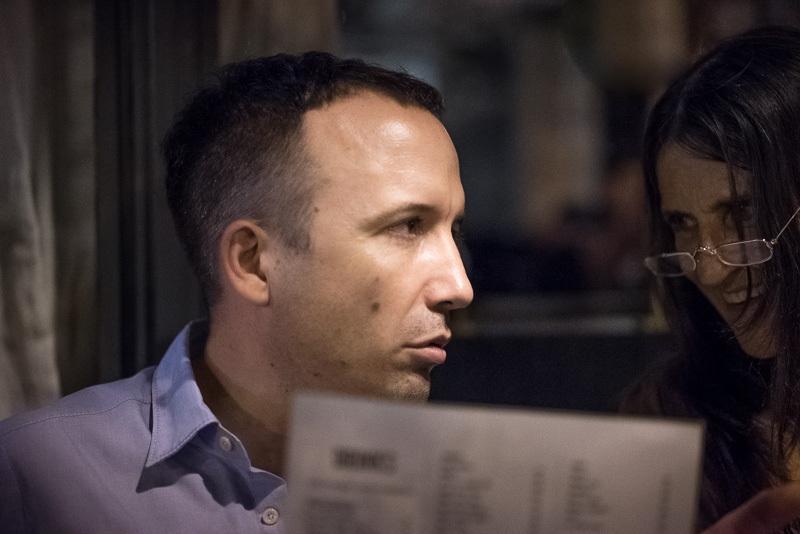
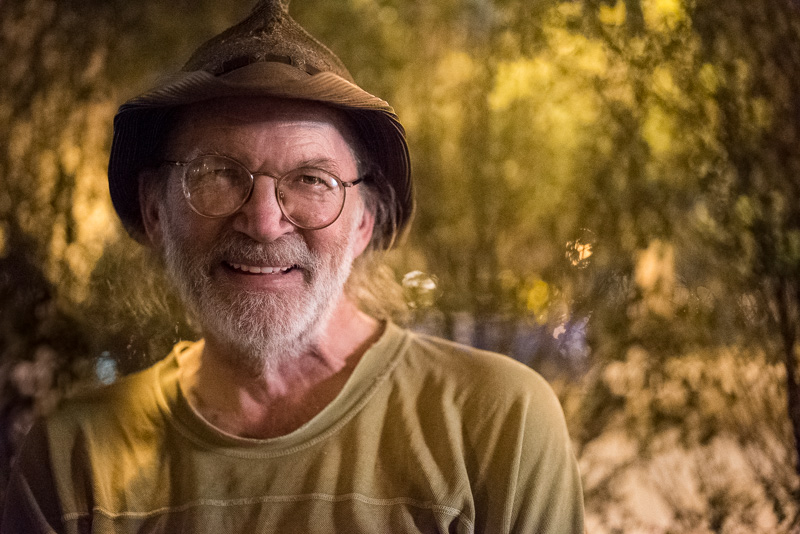
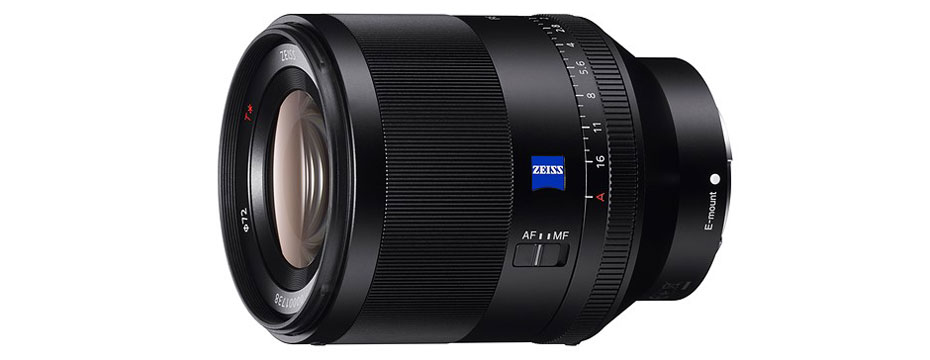
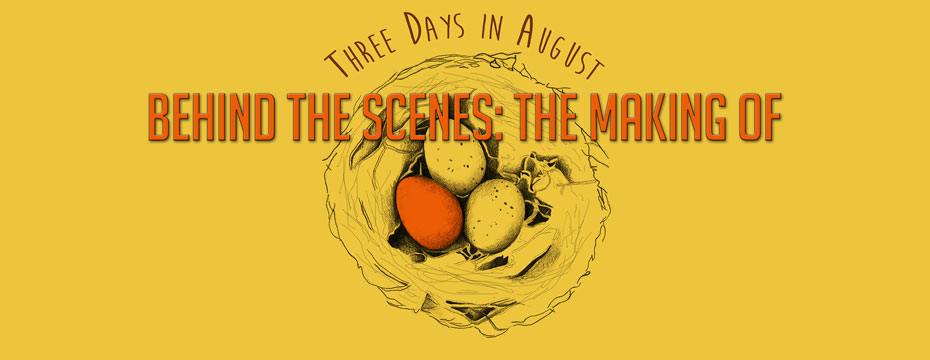

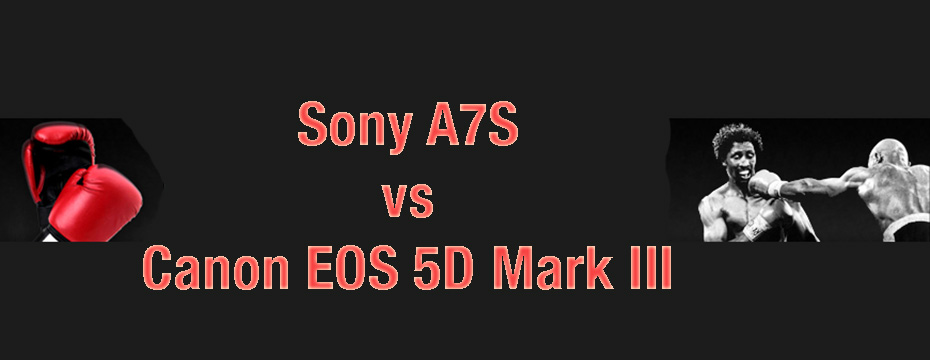
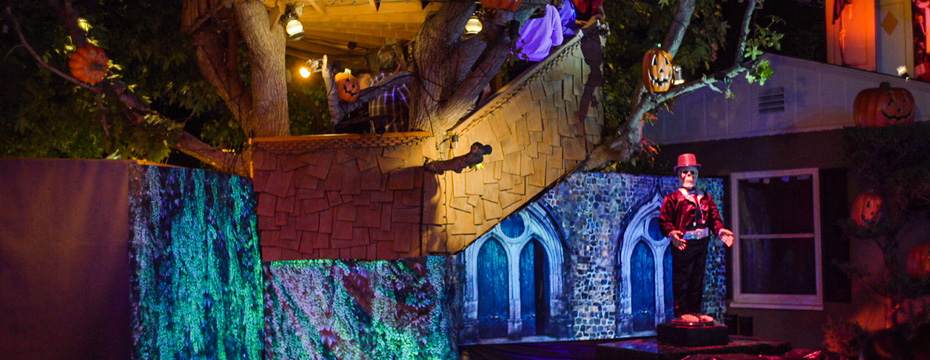
Pingback: A7S as Backup for A7R - The GetDPI Photography Forums